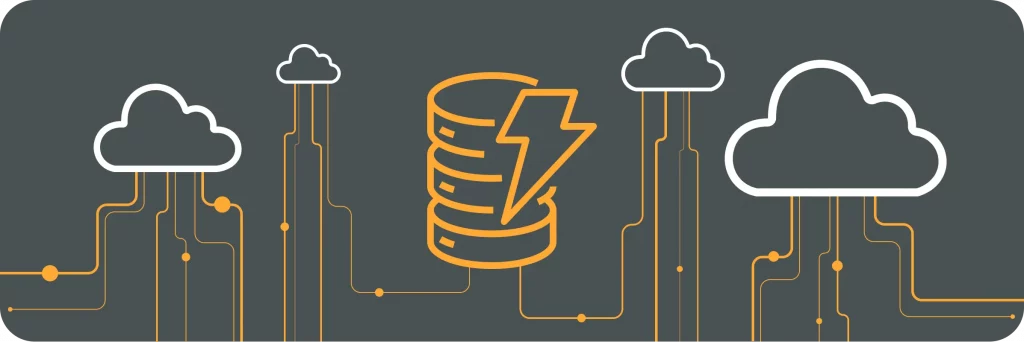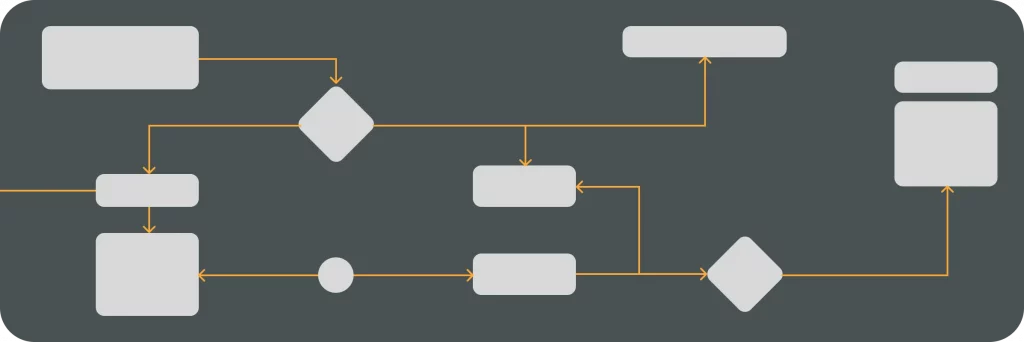DevOps and ITIL are two methodologies that have gained significant popularity in the IT industry. Both aim to improve the efficiency and productivity of IT operations, but they have different approaches and philosophies. In this article, we will explore the basics of DevOps and ITIL, their key principles, and how they intersect with each other.
Understanding the Basics of DevOps
DevOps is a set of practices that combines software development and IT operations. It focuses on fostering collaboration, communication, and integration between development and operations teams. The philosophy behind DevOps is to break down the silos that exist between these two functions and create a culture of shared responsibility and continuous improvement.
The Philosophy Behind DevOps
At the core of DevOps is the belief that effective collaboration and communication between development and operations teams lead to faster software development cycles, improved quality, and increased business value. By breaking down traditional barriers, DevOps aims to eliminate inefficiencies and bottlenecks in the software delivery process.
Key Principles of DevOps
There are several key principles that drive DevOps practices. Firstly, automation plays a crucial role in DevOps by enabling continuous integration, continuous delivery, and continuous deployment. Automation helps streamline the software development process, allowing teams to focus on innovation and delivering value to customers.
Secondly, DevOps emphasizes the importance of monitoring and feedback loops to ensure quick detection and resolution of issues. By continuously monitoring the performance and availability of applications, teams can proactively identify and address any potential problems before they impact the end-users.
Additionally, DevOps promotes a culture of experimentation and learning from failures, known as “fail fast, learn fast.” This mindset encourages teams to take risks, try new approaches, and learn from mistakes. By embracing failure as an opportunity for growth, organizations can foster a culture of continuous learning and improvement.
Diving Deep into ITIL
ITIL, which stands for Information Technology Infrastructure Library, is a framework that provides best practices for IT service management. It offers guidelines for planning, delivering, and supporting IT services to meet the needs of the business. ITIL has evolved over the years and is currently on its fourth version (ITIL 4).
The Origin and Evolution of ITIL
ITIL was originally developed by the UK government’s Central Computing and Telecommunications Agency (CCTA) in the 1980s. Since then, it has undergone various updates and adaptations to match the changing needs of the IT industry. ITIL 4, the latest version, incorporates modern practices such as Agile, DevOps, and Lean.
Core Components of ITIL
ITIL consists of a set of interconnected processes and functions that cover the entire service lifecycle. The core components include service strategy, service design, service transition, service operation, and continual service improvement. Each component has its own set of processes and activities that help organizations deliver value to their customers.
Let’s take a closer look at each of these core components:
1. Service Strategy: This component focuses on understanding the business objectives and customer needs. It helps organizations define their service offerings, identify target markets, and develop strategies to deliver value.
2. Service Design: In this component, organizations design and develop new services or make improvements to existing ones. It involves creating service blueprints, defining service levels, and ensuring that the services align with the business requirements.
3. Service Transition: This component deals with the implementation of new or changed services. It includes activities such as testing, training, and transitioning the services into the live environment. The goal is to minimize disruptions and ensure a smooth transition.
4. Service Operation: Here, organizations focus on the day-to-day management of services. It involves activities like incident management, problem management, and service desk operations. The aim is to maintain the agreed service levels and quickly resolve any issues that may arise.
5. Continual Service Improvement: This component emphasizes the need for ongoing improvement. It involves analyzing service performance, identifying areas for improvement, and implementing changes to enhance the overall service quality. It is a cyclical process that ensures services are continuously optimized.
By following the ITIL framework and implementing these core components, organizations can streamline their IT service management processes, improve customer satisfaction, and achieve their business goals.
The Intersection of DevOps and ITIL
DevOps and ITIL may seem like contrasting methodologies at first, but they can actually complement each other in many ways. The DevOps approach focuses on agility and speed of software delivery, while ITIL provides a structured framework for managing IT services. When combined, these methodologies can create a powerful synergy.
How DevOps Complements ITIL
DevOps practices can enhance ITIL processes by automating manual tasks, improving collaboration between teams, and promoting a culture of continuous improvement. By integrating DevOps principles into ITIL, organizations can achieve faster time-to-market, better service quality, and increased customer satisfaction.
Challenges in Integrating DevOps and ITIL
While the benefits of combining DevOps and ITIL are clear, there are challenges in integrating these methodologies. One of the main challenges is the clash of cultures between development and operations teams. DevOps requires a shift in mindset and a willingness to embrace change. Another challenge is the complexity of adapting existing ITIL processes to accommodate the speed and agility of DevOps practices.
However, the intersection of DevOps and ITIL also presents exciting opportunities for organizations to overcome these challenges and achieve even greater success. One such opportunity lies in the concept of “DevOps as Code.” This approach involves treating infrastructure and configuration management as code, enabling teams to version, test, and deploy changes in a controlled and automated manner. By adopting this practice, organizations can bridge the gap between DevOps and ITIL by incorporating ITIL’s change management processes into their DevOps pipelines.
Another area of opportunity is the integration of ITIL’s incident management with DevOps practices. While DevOps aims to minimize incidents through automation and continuous monitoring, incidents are still bound to occur. By leveraging ITIL’s incident management processes, organizations can ensure that incidents are effectively detected, reported, and resolved in a timely manner. This integration can lead to improved incident response times and better overall service availability.
Furthermore, the intersection of DevOps and ITIL can also enable organizations to leverage ITIL’s service level management to set clear expectations and deliver value to customers. By aligning ITIL’s service level agreements with DevOps practices, organizations can ensure that the speed and agility of DevOps do not compromise the quality and reliability of their services. This alignment can result in increased customer satisfaction and trust.
In conclusion, while integrating DevOps and ITIL may present challenges, it also opens up a world of possibilities for organizations seeking to optimize their IT service delivery. By embracing the complementary nature of these methodologies and exploring innovative approaches, organizations can unlock the full potential of DevOps and ITIL, driving business success and customer satisfaction.
Benefits of Combining DevOps and ITIL
When DevOps and ITIL are combined effectively, organizations can reap several benefits. Improved efficiency and productivity are among the primary advantages. DevOps practices enable faster software delivery cycles and reduce the time taken to deploy changes. ITIL, on the other hand, provides a structured approach to service management, ensuring that IT services are aligned with business objectives.
Improved Efficiency and Productivity
By eliminating manual handovers and automating repetitive tasks, organizations can significantly improve efficiency and productivity. The collaboration between development and operations teams reduces delays and accelerates the software delivery process. With DevOps and ITIL working together, organizations can achieve faster time-to-market and adapt quickly to changing business needs.
Enhanced Service Delivery
Combining DevOps and ITIL enables organizations to deliver services that are both efficient and reliable. DevOps practices, such as continuous integration, testing, and deployment, ensure that software changes are thoroughly validated before being deployed into production. ITIL processes provide the necessary governance and control to manage these changes effectively, minimizing the risk of service disruptions.
Furthermore, the combination of DevOps and ITIL promotes a culture of collaboration and continuous improvement within organizations. By breaking down silos and fostering cross-functional teams, organizations can leverage the expertise of both development and operations professionals. This collaboration not only enhances service delivery but also encourages innovation and creativity.
Moreover, the integration of DevOps and ITIL enables organizations to achieve greater visibility and transparency into their IT operations. Through the use of monitoring and analytics tools, organizations can gain insights into the performance of their systems and applications. This data-driven approach allows for proactive problem-solving and the identification of opportunities for optimization.
Additionally, the combination of DevOps and ITIL supports organizations in meeting compliance and regulatory requirements. ITIL processes provide a framework for managing risks and ensuring that IT services are delivered in a controlled and secure manner. DevOps practices, on the other hand, enable organizations to implement security measures throughout the software development lifecycle, reducing the risk of vulnerabilities and breaches.
In conclusion, the combination of DevOps and ITIL offers numerous benefits to organizations. From improved efficiency and productivity to enhanced service delivery and a culture of collaboration, the integration of these two approaches can drive organizational success. By leveraging the strengths of both DevOps and ITIL, organizations can achieve faster time-to-market, adapt to changing business needs, and deliver services that are efficient, reliable, and secure.
Implementing ITIL in a DevOps Environment
Implementing ITIL in a DevOps environment requires careful planning and consideration. Here are some key steps to incorporate ITIL principles into DevOps:
- Assess the current DevOps practices and identify areas where ITIL processes can be integrated.
- Define the ITIL processes that are most relevant to the organization’s goals and objectives.
- Train the development and operations teams on ITIL principles and how they align with DevOps.
- Develop a roadmap for implementing ITIL processes, taking into account the unique requirements of the organization.
- Continuously monitor and measure the effectiveness of the integrated DevOps-ITIL practices and make improvements as necessary.
Overcoming Potential Roadblocks
Integrating ITIL into a DevOps environment may face challenges and resistance. To overcome these roadblocks, organizations need to foster a culture of collaboration, ensure clear communication, and provide the necessary resources and support for the successful implementation of ITIL practices. It is important to involve all stakeholders in the process and address any concerns they may have.
In conclusion, combining DevOps and ITIL can bring significant benefits to organizations looking to improve their IT operations. While they have different approaches and philosophies, when integrated effectively, they create a powerful synergy that leverages the strengths of both methodologies. By understanding the basics of DevOps and ITIL, embracing their key principles, and overcoming challenges, organizations can achieve improved efficiency, enhanced service delivery, and ultimately, greater business success.




